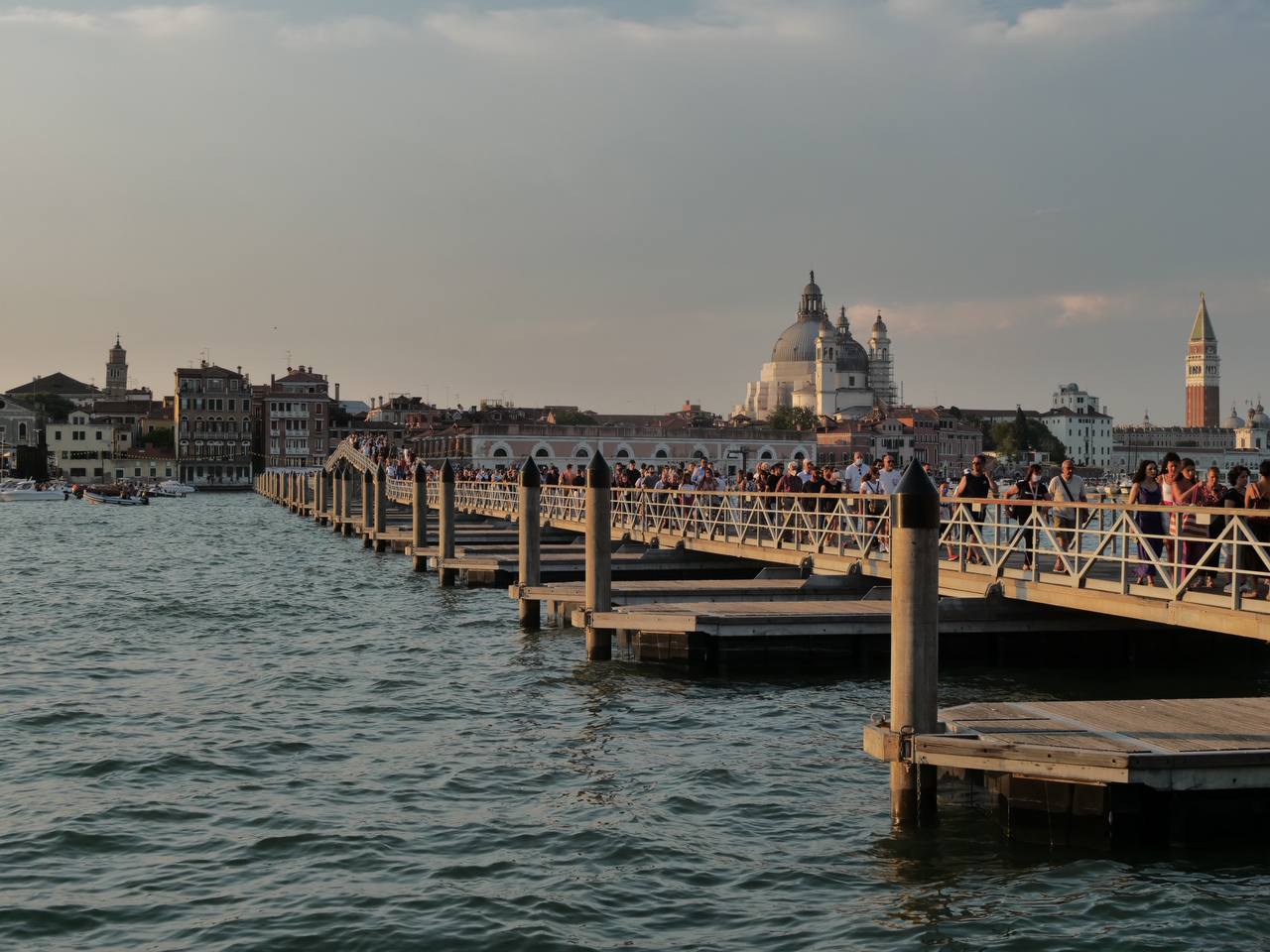For 445 years on the 3rd Saturday of July, the Venetian tradition enlivens the Giudecca Canal: the installation of a 334 meters long temporary floating bridge, connecting Fondamenta delle Zattere and the Basilica del Cristo Redentore located on the island of Giudecca. Two waterfronts of Venice which are usually divided by the water of the lagoon. Iconic and unfailing symbol of the Festa del Redentore, the floating walkway is presented by the votive bridge, which is always followed by celebrations, although in various guises, becoming, in more recent times, a modular structure in wood and steel that for 20 years now the Venetians are accustomed to go through as a memory of a vote for liberation from plague.
Sincerely called “Notte Famosissima” (the most famous night), the Redentore is one of the most loved events by the Venetians and, due to its spectacularism, over time it has become known all over the world. The celebration takes place every Saturday before the 3rd Sunday of July and commemorates the end of the plague epidemic that devastated the city in the years 1575-1477, leading to the death of over a third of the venetian population. It was for this reason that on September 4th, 1576, the Senate of the Serenissima chose to build a church in the name of Christ the Redeemer, as an ex voto to try to remove illness from the lagoon. On the day of the first Redentore, in 1577, a galley bridge was set up to reach the island of Giudecca and the new Basilica. Also here took place the first procession of the faithful, still today a fundamental part of the celebration.
Over the centuries, the votive bridge changes its appearance but not its function: the support of the galleys is soon replaced by the most practical rafts, and then between the late XIX and early XX centuries the large flat-bottomed boats, used for the transport of heavy materials such as coal and timber. After the Second World War, the bridge assumes the “military” visage of the English bridge bailey, which is composed of several steel and wood modules that allow a quick assembly and disassembly. For fifty years the second Genio Pontieri regiment, which came into possession of the structure, at every Redentore Festival has assembled it on the Giudecca Canal as a military exercise.
Declared “residuato bellico” (war remnant) in 2002, the Bailey Bridge is replaced by today’s floating route, which this year celebrates twenty years of use. The surveyor Matteo Vianello, collaborator of the Sole Responsible for the Procedure, followed the work carefully, still today as the first time.
“It is a bridge consisting of floating modules, for a total length of about 334 linear meters, while the walkway is about 4 meters wide – explains Vianello – The beginning began on Tuesday, July 5th, and is a process that is carried out on stages and that gradually closes the Giudecca Canal. On Friday 15th there will be the final stage, which begins at 7 am, then we will proceed to completely close the bridge at 16:15 with the passage of the last Ferry. It will be open to the public from 20.00 on Friday and will remain until midnight on Sunday, when the phase of dismantling will begin”.
The pedestrian crossing used today is the result of a careful mediation between modernity and tradition, respecting the environment that surrounds it and its 445 years of history of the Redentore Festival: the ancient boats have been replaced by floating units in polyethylene, but the floor and the handrail continue to be made of wood.
“The bridge is anchored on steel posts of sown on the bottom of the Canal”, adds the surveyor, “and on the entire parapet there is a lighting system that illuminates the walkway. Some modules have pylons that serve to make a lift to allow public transport to pass under the central passage, which has a height of 3,50 meters and width of 10 meters”.
The bridge of boats is a typical venetian tradition, and it is not unusual for this route on the water to be also used for other celebrations. “The structure is used, in addition to the Festa del Redentore, also for the Madonna della Salute and for the sport event of the Venicemarathon”, Vianello said, recalling that in November 2019 he was employed on the occasion of the Feast of All Saints and the Commemoration of the Dead, when he connected Fondamenta Nove with the cemetery of San Michele.

